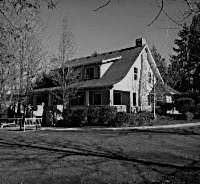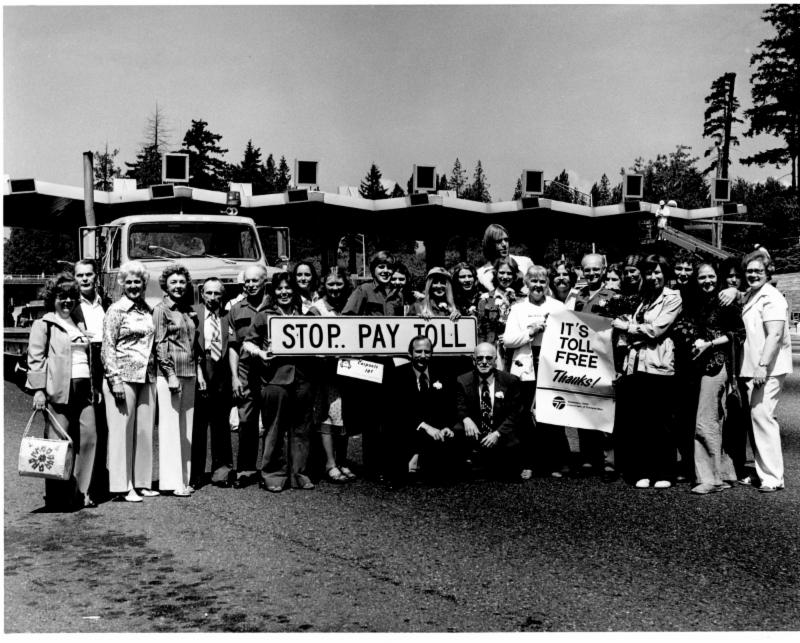Early Years: Pre-European Contact
BY Barb williams, EASTSIDE HERITAGE CENTER VOLUNTEER
Native American stories often begin with the words “In the Early Days Long Ago when the world was very young-----”. This story about the indigenous peoples that inhabited the shores of Lake Washington and the Eastside begins thousands of years ago before white settlers came to the region. The story is grounded in years of research and oral histories.
The area was beautiful with an abundance of natural resources. Freshwater flowed into Lake Washington from the many creeks along its shores. Water was plentiful as was the flora and fauna found along its banks and hills. The Black River at the south end of the lake was the only outlet to the saltwater. It connected to the Duwamish River that emptied into Elliott Bay. These rivers provided the passageway along which the adult salmon returned annually to the lake to spawn and for the young salmon to begin their journey downstream to the saltwater. This critical feature provided the people with a food source upon which they depended. For this reason, they often built their villages at the mouths of creeks where the salmon spawned. The landlocked Kokanee salmon that inhabited the lake were prized by other groups who travelled from the north to fish and return home with the tender meat. Arthur Ballard, a resident of Auburn, Washington, called these indigenous people, The Lake People or hah-chu-AHBSH. HAH -chu means “lake” and ahbsh means “people of”. Most of these people belonged to the Duwamish or Snoqualmie; sub groups of the Coast Salish. They spoke Chinook jargon, but also their own local dialect. Many of the place-names in use today originated with the names of these peoples.
Lake Washington before water was lowered, 1915. (L96.025.020)
Archaeological sites on the Eastside have revealed much about these early Native Americans. One of the oldest sites is at Tokul Creek flats which is at the confluence of Tokul Creek and the Snoqualmie River, below the falls. According to archaeologist, Astrid Blukis Onat, who studied the site in 1967, the area was used for over 2,500 years. Another important site is the one at Marymoor Park situated along the Sammamish Slough in Redmond. More than a thousand artifacts were found revealing a hunting civilization: arrowheads, blades, and awls used to punch holes in hides were among the items discovered there. Along the Black River two villages were found. The first was inhabited from about 1790 to 1825 and the second between 1850 to 1856. There have been eighteen sites studied around the shores of Lake Washington. Each village site revealed dwelling(s), artifacts and had its own burial ground. The tu-oh-beh-BAHBSH site near Thorton Creek revealed one house and access to the large cranberry bog where Northgate is presently located. The TAHB-tah-byook site is located at the mouth of Juanita Creek with possibly seven houses. They enjoyed feasting on what was considered some of the best Wapato in the Puget Sound area. The Wapato, often referred to as the Indian Potato, was a staple food plant for the native Americans. The root was roasted like a potato and was a source of starch. The SAH-tsa-kah-LUBSH (head of the slough people) had three houses on the Mercer Slough and close to present-day Factoria. It was an important site being the terminus at the lake for the trail that lead to Lake Sammamish, onward to Snoqualmie prairies where trading took place, and to areas east of the Cascade Mountains. It was along this trail that one hundred Yakima and Wenatchee Indian warriors came in 1855 to fight the Battle of Seattle. The village site and its headman, Che-shi-ahud (Lake John), sheltered the warriors. To the northwest at Meydenbauer Bay, the villagers caught peamouth fish in Meydenbauer Creek. The long marsh that stretched south of the village for three miles was a productive natural resource. Women dug cattail roots for food and used the leaves to make mats often used for house construction when the people left the winter houses for their summer harvesting grounds. The marsh grasses along with twigs and bark provided materials for baskets woven by the women. Some were so tightly woven, they could hold water and were used for cooking. Volcanic rocks were heated in the fire and then placed in the water at intervals to keep the water hot. In this way the food was cooked or boiled. Some foods such as salmon were dried. This was the case at the village site called, shu-bahl-tu-AHBSH (drying house people) located at May Creek where the salmon runs were plentiful. The fish were dried on racks or cured in the smoke houses.
A popular deer hunting area was a field on Mercer Island where the deer were driven across the water to a location near Beaux Arts. Here they came ashore exhausted from their swim and were killed. The Native Americans hunted on Mercer Island, but never stayed overnight due to a belief that a monster lived at the top of the island and the island sank into the lake at night. This idea may have originated with the changing water levels due to seasonal flooding, landslides and other natural causes. Presently, there are two known upright, underwater forests that slid into the lake: one at the north end of the island and the other at the south end.
A large western red cedar bark berry-picking basket. (C2-64)
There was much trading among local and outside groups. Trade pathways from Elliott Bay to east of the Cascade mountains developed. Northern peoples came to trade, visit and raid the villages for slaves and goods. Marriages were common between villages and peoples of different groups. During the summer months, there was much celebrating and villagers could be found at their summer harvest sites. When the salmon runs came in the fall, everybody worked. During the winter months, the people returned to their winter homes, processed the summer’s harvest, made items for use and danced and sang in celebration of the ancestors and spirits.
The Lake People, like many indigenous peoples, developed a clever technology to support their daily needs. From basketry, tools, clothing, canoes, house construction, hunting tools and so much more, they relied on the natural resources in their environment. A specialized duck harpoon was created that had two prongs that caught in the feathers of the ducks. When the migrating flocks of waterbirds came to the lake and marsh, the men set fires on clay hearths in their canoes. The flickering of those fires could be seen at night along the shorelines. The fires drew the birds out of the marshes whereupon they were ensnared in large nets made from the twine of stinging nettle plants, or caught with the duck harpoon.
Much of the local Native American Pre-European Contact history is observed or spoken. Thanks to researchers and contributors, it is being discovered and valued for the wonderful lessons the Lake People of Lake Washington and Puget Sound have to teach us. Over all, life seemed good for the people and resources plentiful during this historic time.
Resources
Bohan, Heidi. “The People of Cascadia: Pacific Northwest American History” c. 2009
Buerge, David. “Indian Lake Washington”, article in The Weekly, August 1 - August 7, 1984.
Margeson, Doug. “History underfoot: Eastside abounds in ancient Native American camps and villages”, article in Living, Wednesday, September 22, 1993.
Williams, Jacqueline and Goldie Silverman. “Beyond Smoked Salmon”, article.
Part of our Award Winning Eastside Stories Series















